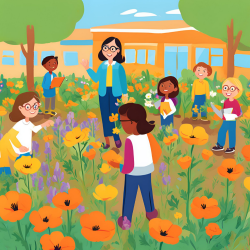PHASE II & III
Phase II Actions (2025-2028)

Action 5: School Demonstration Gardens and Education
- A funding structure for a network of school demonstration gardens and educational materials would be developed collaboratively with local school districts and other partners to:
- Provide nature and ecological education for school-aged children on native plants, gardening, and conservation goals
- Strengthen a sense of place and regional identity rooted in San Diego County's biodiversity
Action 8: Implement Landscape Retrofit Pilot Projects at County Facilities
These pilot projects would follow the Native Plant Landscaping Design Manual and:
- Pilot test programmatic and incentive options that will encourage native plant landscaping at private properties in priority locations in the unincorporated area
- Identify potential pilot sites within urban and rural underserved communities, wildland urban interface corridors, and high fire-prone areas
Phase III Actions (2027-2028)

Action 6: Landscape Professional Certification Program
Collaborate with regional partners such as community colleges and/or regional organizations that offer professional training services to develop a certification program to:
- Recognize local landscaping professionals trained in native plant landscaping design and maintenance
- Develop a list of certified professionals that would be available from the Program website
Action 9: Develop Incentive Program
A San Diego County Native Plant Landscape Incentive Program would be developed to:
- Incentivize native plant landscaping for private development in the unincorporated area, such as offering rebates for converting lawns to native vegetation
Action 10: Create Landscape Design Templates
Landscape design templates and a web-based tool for integration into the Program website would be developed to:
- Offer residents easy-to-use, tailorable design plans for installing native plant landscaping
- Provide templates for landscaping in the defensible space zone in fire-prone areas, along wildlife corridors, and to establish pollinator habitats, among other examples








